The first cohort of CSUDH-LACMA Visiting Scholars completed their coursework and hands-on training in Fall 2021. Alongside their collections management and curatorial training, Visiting Scholars developed research projects inspired by materials in LACMA’s collections, and a number of these projects are being presented here on Unframed.
I had the privilege to be part of the CSUDH-LACMA Visiting Scholar Program during the Fall 2021 semester, which allowed me to work with several interesting and amazing ceramics from Mesoamerica. I was immediately drawn to figural pottery specifically animal sculpted ceramics. Figural pottery is usually human or animal sculpted into the pottery rather than painting on, the ceramic is sculpted like the human or animal. I thought it was amazing how these ceramics were created and wanted to learn more about the significance of the animals represented.
During the program, I was particularly interested in ceramics produced by the Classic Maya culture, which lived in what is now Mexico and Central America from approximately 250–900 CE. When people think about Maya pottery, people may picture polychrome vessels that depict human figures and palace scenes on their painted surfaces. Take for example this super colorful Maya polychrome vessel from 740–800 CE. This vessel is part of a tradition known as the Ik’ style, likely associated with the archaeological site of Motul de San José, Guatemala. The style is most well known for its vibrant color palette, including pinks, purples, reds, oranges, and creams.
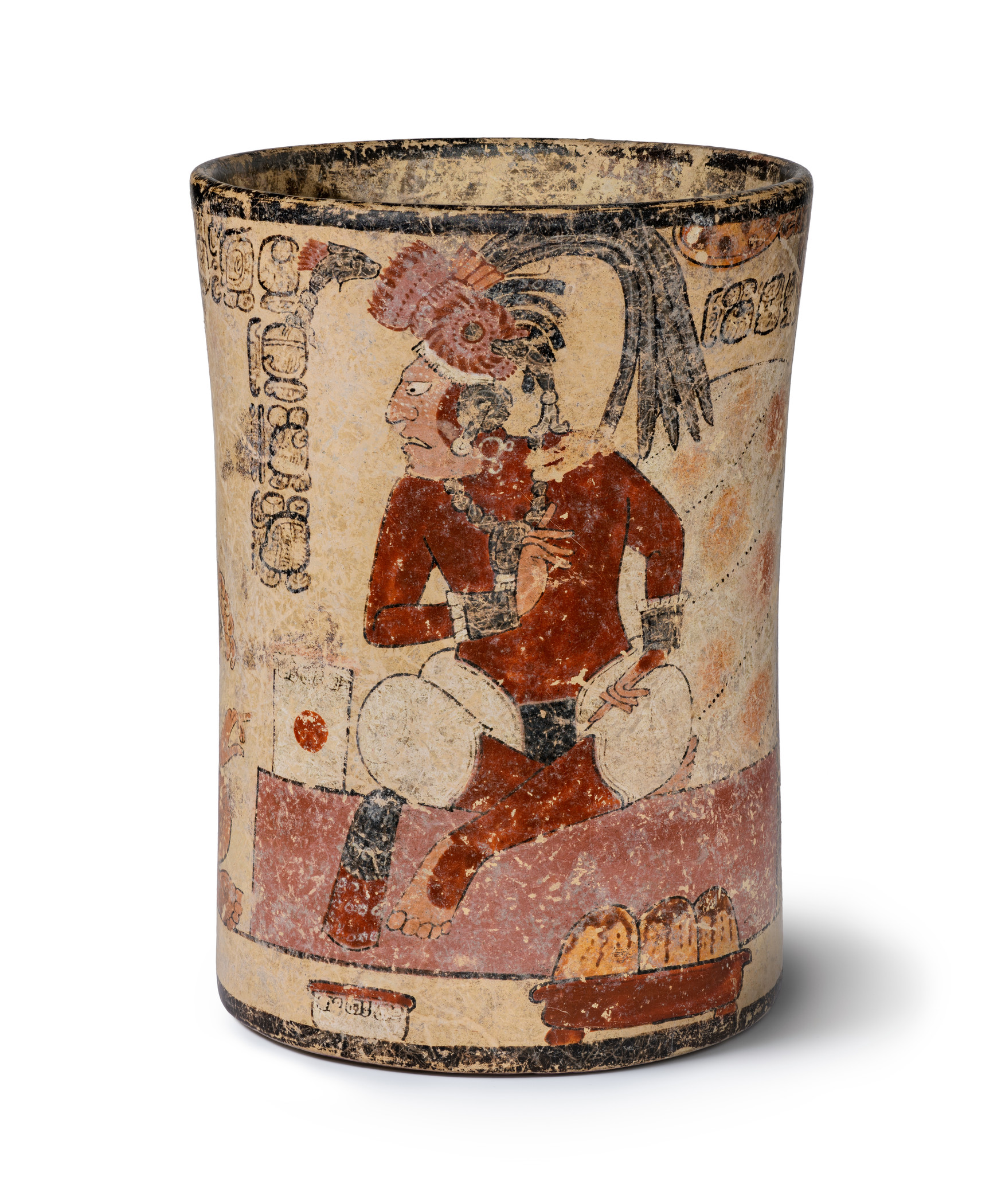
Some might not think about the array of ceramic vessels that are sculpted to represent animals, plants, and other three-dimensional figures. I suspect ceramic artists would have molded ceramics in this manner because it brings the art to life and demonstrates another aspect of how ceramics can be created. These figural ceramics are interesting because they demonstrate how ceramics can be sculpted instead of painted. Sculpting ceramics like these and having them survive the firing process can also be trickier than other vessel shapes. Some examples that showcase the liveliness of Maya figural ceramics include these in LACMA’s Art of the Ancient Americas collection, which depicts (below, from left to right) a coati, a supernatural jaguar, and an armadillo.
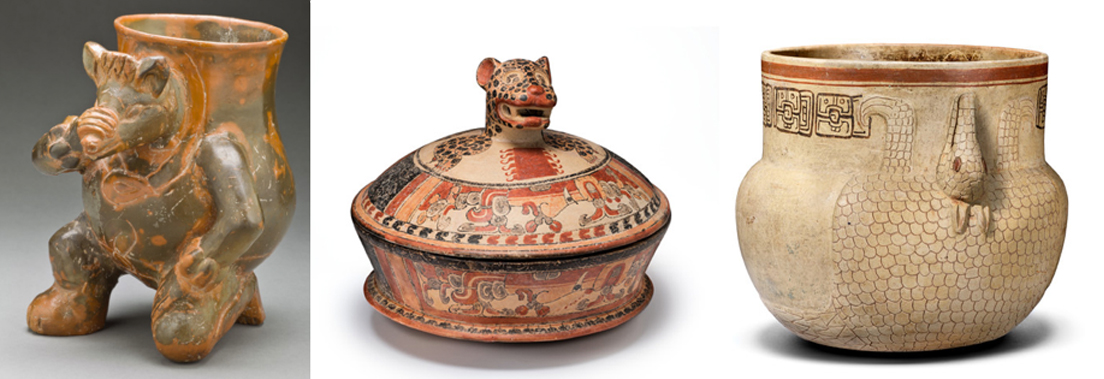
Potters produced figural ceramics in other parts of the Americas as well. For example, the dog from Colima, Mexico, which was likely found in a local tomb, may have been placed there to guide the deceased through the underworld to the afterlife. Another example of a figural ceramic is from Colombia. It shows a crocodile that has three crocodiles molded in the figural ceramic, two from either side, to evoke cosmic belief. The vessel's four points (the head and tail of the main croc, plus the two side crocs) could represent the form of the universe, which is a well-known concept in Mesoamerica and could also apply to Colombia.
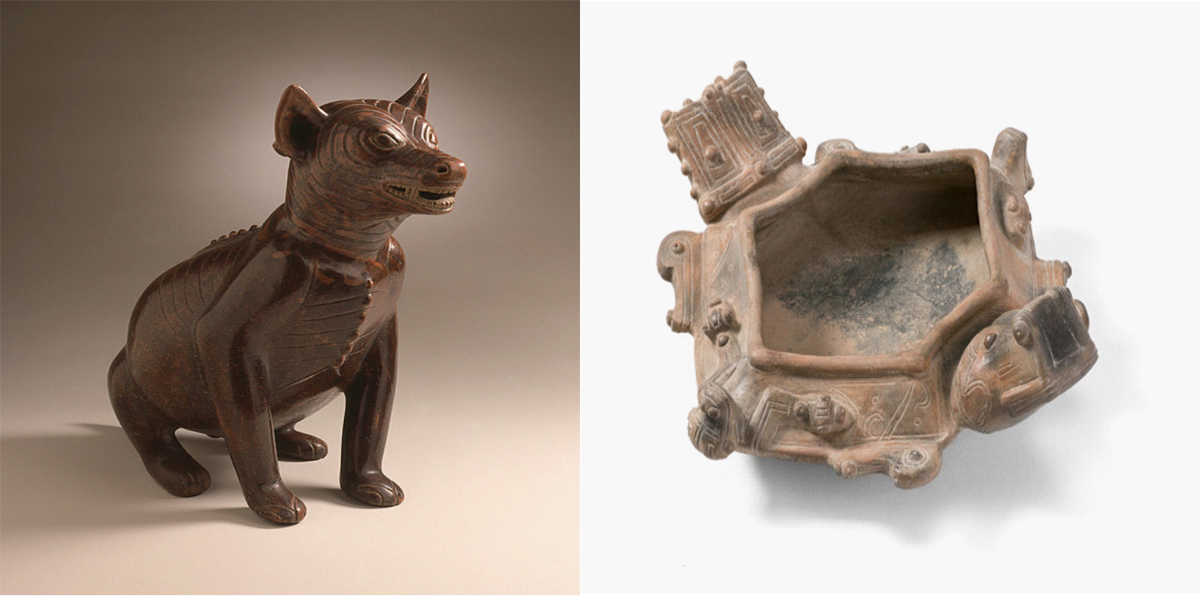
This Maya vessel (below) in the shape of a crocodile is likely from what is now Guatemala and dates from 300–600 CE. The date range is known because the style of this vessel is similar to other ceramics created in this region throughout the Early Classic period. In fact, monochrome black-slipped vessels were extremely common in the Early Classic. We don't have more specific information because we don't know where it came from, and because looting is very regular in this area, we have limited contextual information. The vessel was created using a multitude of techniques, such as molding bits, sculpting, and incising. The vessel’s opening includes incisions that probably depict a maize plant on the crocodile’s back. The tail of the crocodile also has three slit vents: one on each side and another at the bottom. Possible explanations for these openings include allowing steam to escape during the firing process so that the piece would not explode, or that the tail chamber could have served as a rattle. The crocodile is decorated using only one color of slip (black). It was both slip-painted and decorated with additional post-fire pigment. In the Maya region, rubbing cinnabar into incised motifs was a very common practice. This (or the remnants of this) is most likely what we see here.
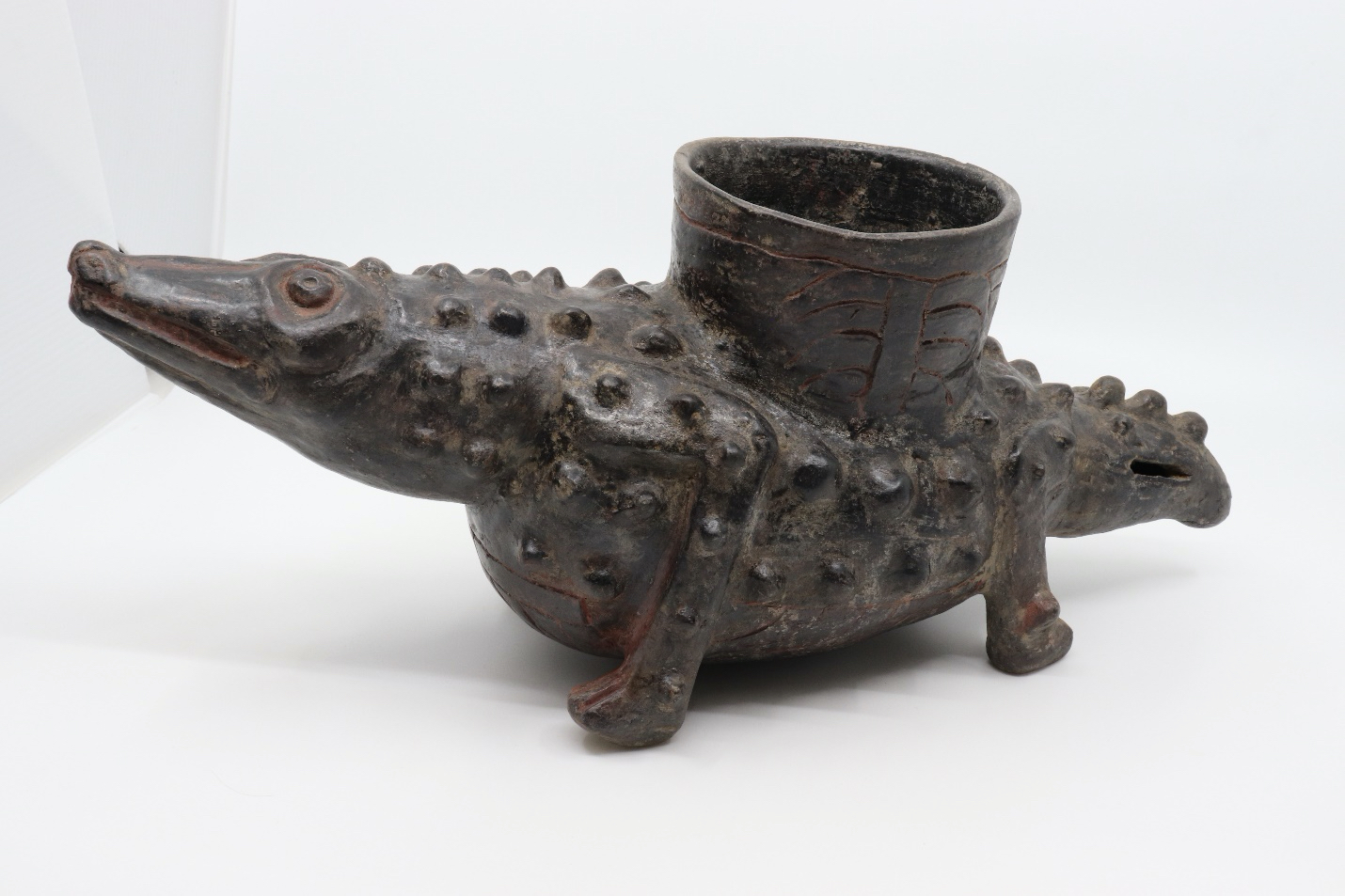
Why a crocodile? Images of crocodiles can be found in painted and sculpted motifs created by artists across Mesoamerica and Central America, but why? Crocodile art appears all across Mesoamerica, not just in the Maya area. Crocodiles were central to the Mesoamerican cosmovision (or worldview), shared by cultures including the Maya, Aztecs, and Zapotecs. In Maya culture, water and caves are linked to the underworld. The huge crocodile is imagined to float on the primordial sea in the same way that crocodiles float in murky water, calm and motionless. The importance of crocodiles is made clear in the story of a crocodilian beast called Cipactli that granted corn to humans in return for their sacrifices. In Aztec mythology, the first day of the ceremonial calendar was assigned to Cipactli, a crocodile that would deliver maize to men in exchange for proper blood-water sacrifices, and by slaying Cipactli, humans created the earth and sky from its body.¹
Maya communities had similar beliefs, with a world model structured around a celestial crocodile and an earthly crocodile. Crocodiles, both celestial and terrestrial, appear in Maya mythology and art, and the deities triumph over these entities creating the sky and the earth. The myth of Zipacna is from the Popol Vuh, tells of a crocodile who was defeated by the hero twins, Hun-Apu and Ixblanque.² Some envisioned the surface of the earth as the back of a giant crocodile floating in the primordial waters, because of its ability to occupy both watery and terrestrial habitats. In other versions, a giant turtle floats in a primordial sea, serving as the earth.³ The crocodile has many dipictions all in their own variations. Animals like the crocodile are often used to represent places in the cosmos—the sky, the earth's surface, the ocean, and the underworld.¹ The pattern of the bony plates of the crocodile looks similar to a Maya field grid design.¹ The Maya and Mesoamerica mythology also connected animals with plants, such as when the giant earth crocodile/turtle sprouts maize and cacao on their backs in the story of the universe.⁴ Since the turtles and crocodiles can move in both water and on land, they both are able to move water with their bodies onto plants, bringing them to life. Vessel in Form of a Crocodile directly references the Mesoamerican cosmovision by showing a carving of a plant erupting from the back of the crocodile.
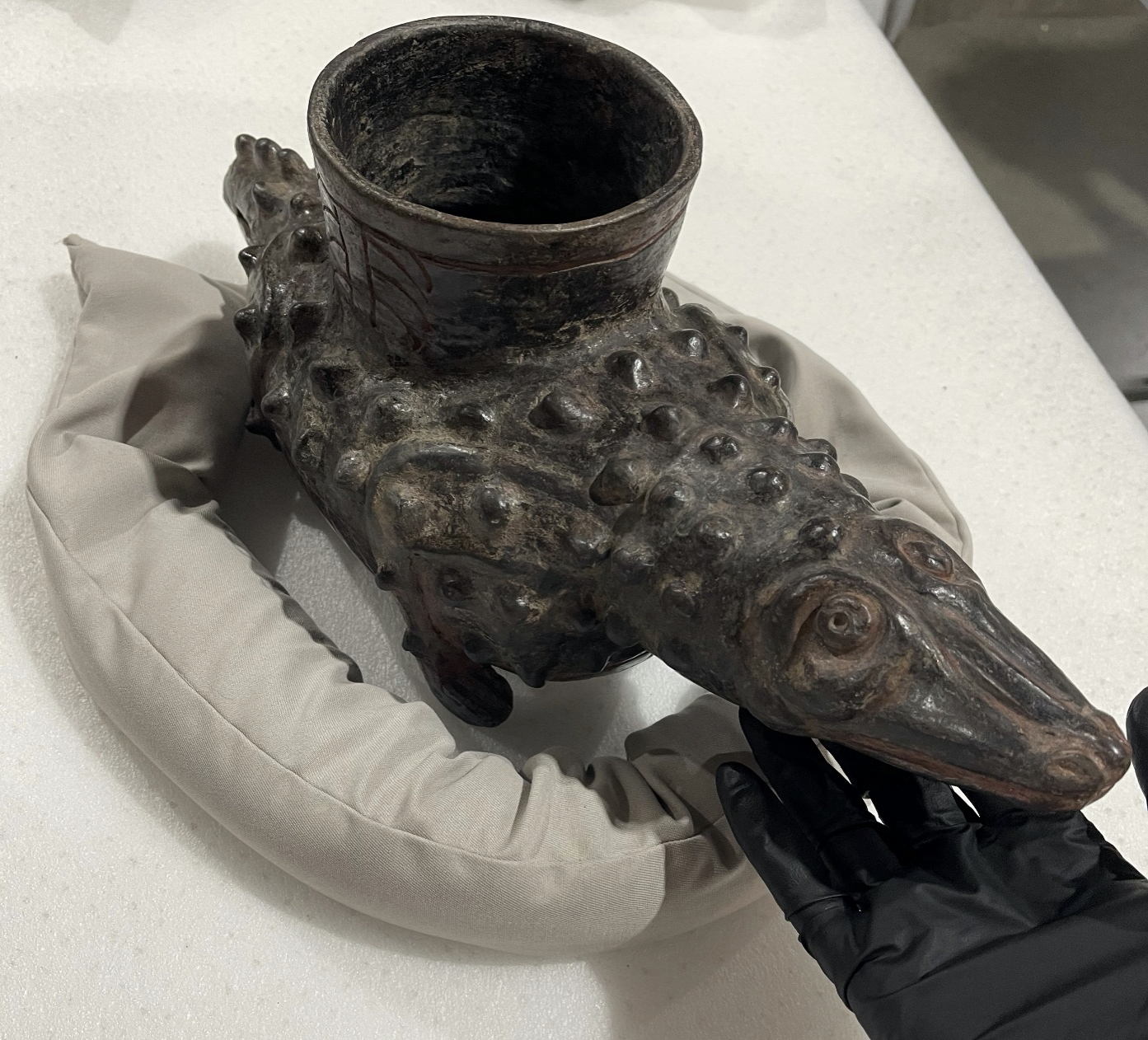
To the Maya, the crocodile is a creature that connects the celestial, terrestrial, and underwater or watery realms, due to their ability to survive on land and water making them powerful and dangerous to both. Crocodiles are also associated with agricultural fertility since they travel from water to land and have the ability to deliver water to the soil. Crocodiles are well known in locations where Maya mythology is prevalent. They could also have been a possible food source for the Maya people, giving life to many. A Maya artisan created this figural ceramic not just as an aesthetically interesting piece, but as a reflection of deeply held cultural beliefs about how the world was structured and how the Maya saw life. Figural ceramics are a great way to display the importance of certain animals. When I first observed this crocodile, I was curious about how it was created and the story behind it. Observing even unprovenanced pieces and conducting research on them, I have realized the significance of some animals in Maya culture. The techniques that created these ceramics and the way they were sculpted to represent animals bring these stories to life.
Works Cited
1. Thurston, Elizabeth Barbara. "Crocodiles and the ancient Maya: an examination of the iconographic and zooarchaeological evidence." (2011).
2. Chinchilla Mazariegos, Oswaldo. “Cosmos and Warfare on a Classic Maya Vase.” RES (Cambridge, Mass.) 47, no. 47 (2005): 107–34.
3. Taube, Karl A. Itzam Cab Ain. Caimans, Cosmology, and Calendrics in Postclassic Yucatán. Vol. 26. Center for Maya Research, (1989).
4. Coe, Michael D., Stephen D. Houston. The Maya. 2015.



